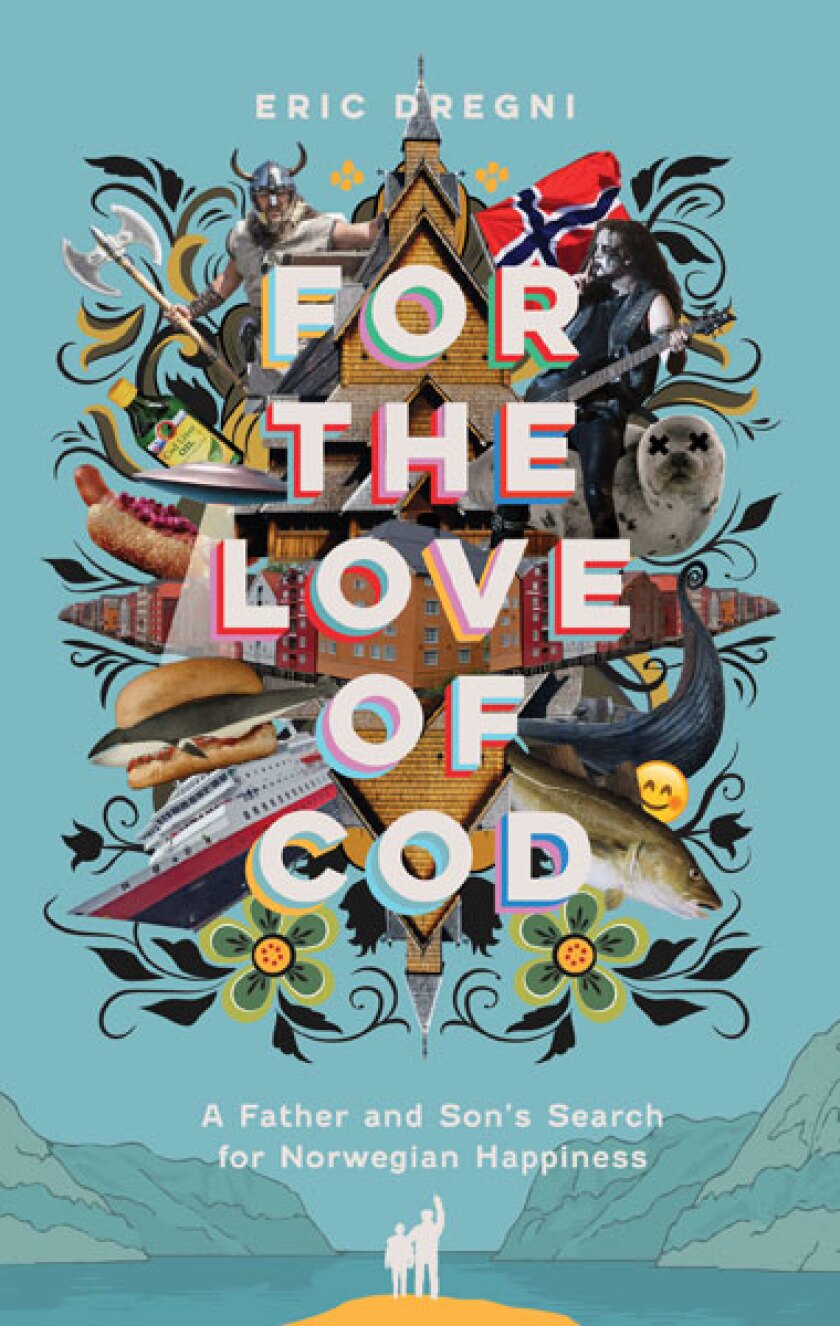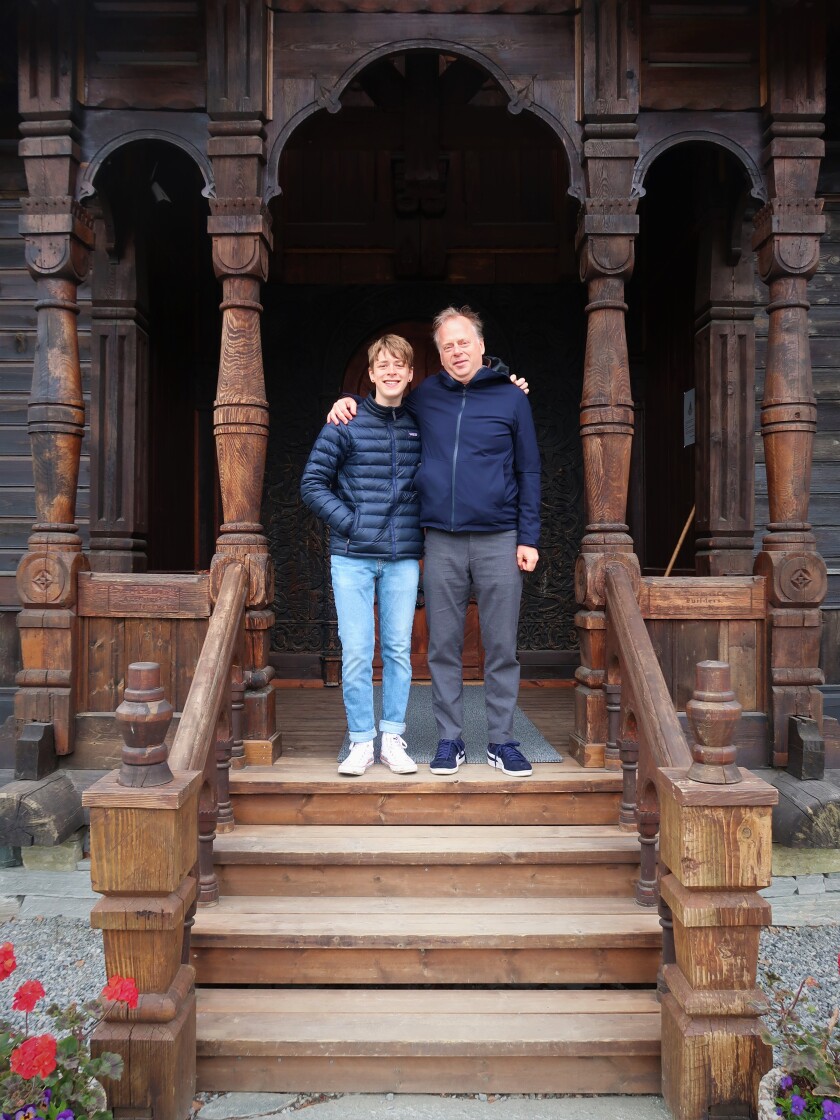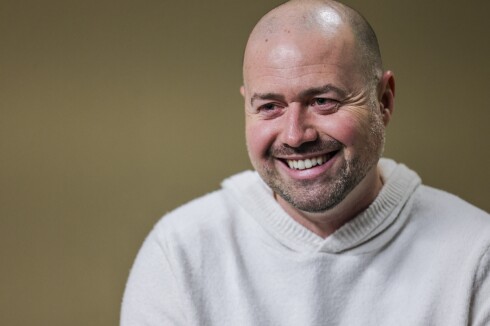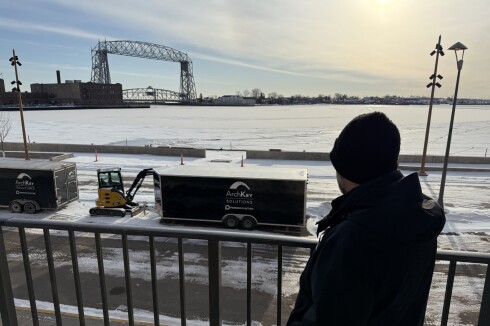FARGO — Here in the Upper Midwest, we tend to think of Norwegians as stern, stoic people from a cold land with long winters. The recent rise in popularity of Scandinavian murder mysteries didn’t help warm anyone’s images of the country.
Not everyone else sees that. For the last five years, Norway has ranked in the top of the World Happiness Report list of happiest countries, coming in sixth this year, a steady slide from the top spot in 2017.
ADVERTISEMENT
Eric Dregni has had his own experiences in the Scandinavian country, having visited there as a teen with his father, then returning for a year as an adult 17 years ago.
A few years ago the Minnesota writer returned again, this time with his teenage son, to visit the country where the boy was born.
The trip resulted in Dregni’s 20th book, “For the Love of Cod: A Father and Son’s Search for Norwegian Happiness.”

The key to Norway’s happiness is systematically rooted, Dregni says.
“Norway is pretty squared away,” he says, referring to solid health care and pension plans, and the poverty gap is significantly smaller than here in America.
ADVERTISEMENT
“In Norway, they essentially conquered poverty,” he says. “Happiness is more about security and sharing, not super capitalism and going after the almighty dollar, or rather, kroner.”
That idea of sharing is important as the country has a strong sense of community and identity.
“In Norway it’s really pronounced. What does it mean to be a Norwegian? In America, that’s constantly changing,” he says.
Part of the Norwegian identity is one of perseverance, as a number of agricultural disasters led to much immigration to America in the 1800s.

“Italians are happy, they laugh and sing. But they also have high expectations, so they get upset when they don’t get there,” Dregni explains. “In Norway it’s more like, ‘We’re alive, so that’s pretty good. It could get worse.’”
ADVERTISEMENT
The other thing Norwegians pride themselves on surviving is winter.
“I’d rather take a Midwest winter over a Norwegian winter any day,” Dregni says. “It’s very cold that chills you to the bone and it didn’t strike me as the happiest country.”
But some aspects of Norwegian identity may be based on what people think Norwegian identity should be. He points to how a number of old stave churches have been updated and embellished to look like what some people may think old Norway looked like.
“Norwegian identity is more manufactured,” Dregni says.
One of those stave churches was the Fantoft Stave Church in Bergen , which his great-grandfather attended. That stavkyrkje was destroyed by arson in 1992, the first in a number of old churches burned by black metal followers, a bit of history that caught the attention of Dregni’s son, Eilif. The boy also was interested to learn Vikings weren’t drunk when raiding as much as depicted, but sometimes under the influence of psychedelic mushrooms.

ADVERTISEMENT
Dregni recalls his first visit to the country as a teenager with his father and how he missed out on learning much of the history then.
“His view was much more modern. What he thought of Norway was very different than what I thought of Norway,” Dregni says of Eilif.
Having written on odd attractions in “Weird Minnesota,” does he have a favorite Minnesota Norwegian attraction?
“Oh boy. Where do I start?” he says. “I’d say the (Kensington) Runestone, but people get so worked up about it.”
The 200-pound slab of inscribed stone was discovered in a field near Alexandria , Minnesota, in 1898 and many said it was left by Scandinavian explorers in the 14th century. While scholars have since dismissed it as a hoax, many still believe its authenticity.
He explains that there will be tours of visiting Norwegians stopping at the Kensington Runestone Museum in Alexandria and other Nordic attractions around the state, including the Hjemkomst Center in Moorhead.
“There’s this idea that they want to show that they were here,” he says. “Norwegians talk about the Midwest like it’s their colony. This is their area.”
ADVERTISEMENT
He thinks about it for a second.
“If I were traveling in another country, the last thing I would want to see is a bunch of Americans,” he says.









